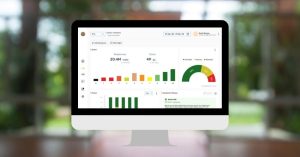Survey design and methodology come with various terms and jargons. While curating your initial market research templates, it can get slightly intimidating. However, there are common terminologies that marketing professionals use. In this blog, we will take you through some common terms and their meanings.
What is A Survey in Market Research?
A survey is a systematic method of collecting solicited information from people using a set of questions. These methods happen via online platforms, in-person, phone call or via mobile applications. Surveys help companies understand their target audience, requirements and how a business can cater to their customers, existing and new. Here are the steps involved in publishing a survey:
- Define your target population by a means of creating a customer persona. This target persona is a representative of the people you will cater to.
- Choose a specific type of questionnaire you want to design- post purchase, brand awareness, customer support experience etc.
- Distribute the questionnaire via appropriate channels: dynamic emails, WhatsApp forms, Facebook messenger or via in-app feedback.
- Collect qualitative and quantitative data and analyze it using new-age tools.
What is the difference between a questionnaire and a survey?
A survey and a questionnaire are words of the same coin, used interchangeably. However, there are nuances. A questionnaire is a form that contains a set of questions. However, it can be either long or short- depending on the goal of the research. A survey refers to the broader process of creating questionnaires, collecting data from customers and analyzing it for further improvements. Marketing professionals can assess the customer base using various methods such as questionnaires, interviews, or observations.

Commonly Used Survey Terminologies
Surveys are an essential research tool in qualitative and quantitative research with a wide range of applications. There are various types of surveys that researchers can use depending on their research goals. Some commonly used types of surveys include:
- Market research surveys
- Customer satisfaction surveys
- Employee engagement surveys
- Customer persona development
- Political surveys
- Brand awareness questionnaires
- Event feedback surveys.
Marketers can use any of these questionnaires to collect information depending on the goal of the research. Here are some of the terminologies:
Exploratory surveys
Exploratory in itself means to explore. The surveys obtain data from a group of people without any preconceived notions about their responses. These surveys are less structured and more open-ended than models like quantitative research studies. It identifies potential problems or areas that require further exploration. Typically, they are conducted through multi-modal methods such as phone interviews, online surveys, or in-person focus groups. These types of studies are ideal for gaining insights into new markets before resources are invested in larger statistical significance studies.
Descriptive surveys
Descriptive surveys collect detailed information about a specific group’s demographics, behaviours, attitudes, and opinions on topics. Descriptive surveys primarily use closed-ended questions with rating scales. It also includes open-ended questions for people to explain their preferences on the rating scales. Researchers use various sampling techniques, such as random sampling or targeted sampling based on specific criteria. These techniques ensure the survey reaches the ideal respondents without impacting the completion rate. Field notes and interviewer training can determine data quality when conducting descriptive surveys.
Causal surveys
Causal surveys are used for research purposes in qualitative research. Causal surveys provide insight into factors responsible for specific outcomes or behaviours observed in a group of people. This makes the data useful in areas that require understanding consumer behaviour or preferences. The results from causal types of studies help organizations make informed decisions. Causal surveys typically involve open-ended questions and rating scales as well as specific questions with pre-set responses.
Sampling techniques
A sampling technique is a method where data is collected and analyzed from a sample of the population (sampling process). This is further divided into probability sampling and non-probability sampling. Ensure that survey results accurately represent the population being studied. Pay attention to response rates, drop-outs, completion rates, and interviewer biases during a survey design..
Closed-ended questions
Closed-ended questions (quantitative) have a numerical or a rating based approach. Here people can select an option from a range to indicate their satisfactions or priorities. Most surveys start off with a closed-ended question. Examples include: rating scales, ranking scales, dichotomous questions, likert scale etc.
Open-ended questions
Open-ended questions (qualitative) allow people to express their opinions in the form of text or multimedia. Most closed-ended questions are accompanied by open ended questions. This is to understand the reason behind the response on a closed-ended scale.
Double-barreled questions
Double-barreled questions ask two questions in a single sentence. This approach can be broken down by asking two different questions. Double-barreled questions can be very confusing for respondents.
Demographic questions
Demographic questions are used to identify personal details of your audience or demography. It includes their names, gender, income level, personal beliefs and other personal details. It is mostly used for population census or to gauge certain personal information to improve on certain products (medical industry, sexual wellness etc).

Customer feedback survey
Customer feedback surveys are created to collect feedback from customers, users and buyers. It can be shared offline or online after a certain transaction or purchase. A customer feedback survey aims to capture customer experiences across various touchpoints. The touchpoints are: during the onboarding process, post-purchase, or during certain phases of a purchase journey (high-investment products such as a car or banking facilities).
A customer feedback survey usually has one or two questions: qualitative and quantitative.
Customer satisfaction metrics
Market standard terms are Net Promoter Score (NPS), Customer Satisfaction Score (CSAT) and the Customer Effort Score (CES). These metrics are commonly used across every industry and touchpoint. NPS, CSAT and CES can gauge customer satisfaction, loyalty and efforts. These metrics can assess churn rates, happy customers, unhappy customers and need-gaps.
Additional Terminologies in Market Research
Some of additional important survey terminology used in a market research:
Margin of error
The margin of error is a statistical measure that determines the accuracy of a survey’s results. It refers to the range in which the true value of a population parameter may lie based on the sample data collected. The margin of error is usually expressed as a percentage or a number of points.
Scale
Scale refers to the process of adjusting survey responses or measurements to a different numerical range. Scaling helps transform raw data into a standardized format, allowing for meaningful comparison and analysis.
Sampling error
Sampling error is the difference between the characteristics of a sample and the characteristics of the population being studied. It occurs due to the fact that it is not feasible to survey every single member of a population. So researchers rely on sampling to gather representative data. The larger the sample size, the smaller the sampling error will be.
Response rate
Response rate refers to the number of people who respond to a survey compared to the total number of people who were invited to respond. A low response rate can affect the validity and reliability of survey results as it may introduce bias into the data.
Completion rate
The completion rate in a survey is the percentage of respondents who finish the survey out of those who started it. It’s calculated by dividing the number of people who completed the survey by the total number of people who started it, then multiplying by 100 to get a percentage. This indicates the number of people who completed the survey till the end.
Conclusion
In research, survey terminology plays a critical role in ensuring accuracy and consistency of results. Sampling error can be minimized by increasing the sample size, while response rate is essential for reliable data. Closed-ended questions are useful for collecting structured data, while open-ended questions provide rich, candid feedback. Understanding these survey terminologies can help researchers collect and analyze data with greater precision and clarity.
Merren offers a robust customer feedback tool that empowers every marketer to curate surveys and collect actionable data. Sign up for a 14 day free trial and supercharge your feedback and data collection techniques. With Merren, the modern day marketer can customize their type of question for their survey research.



